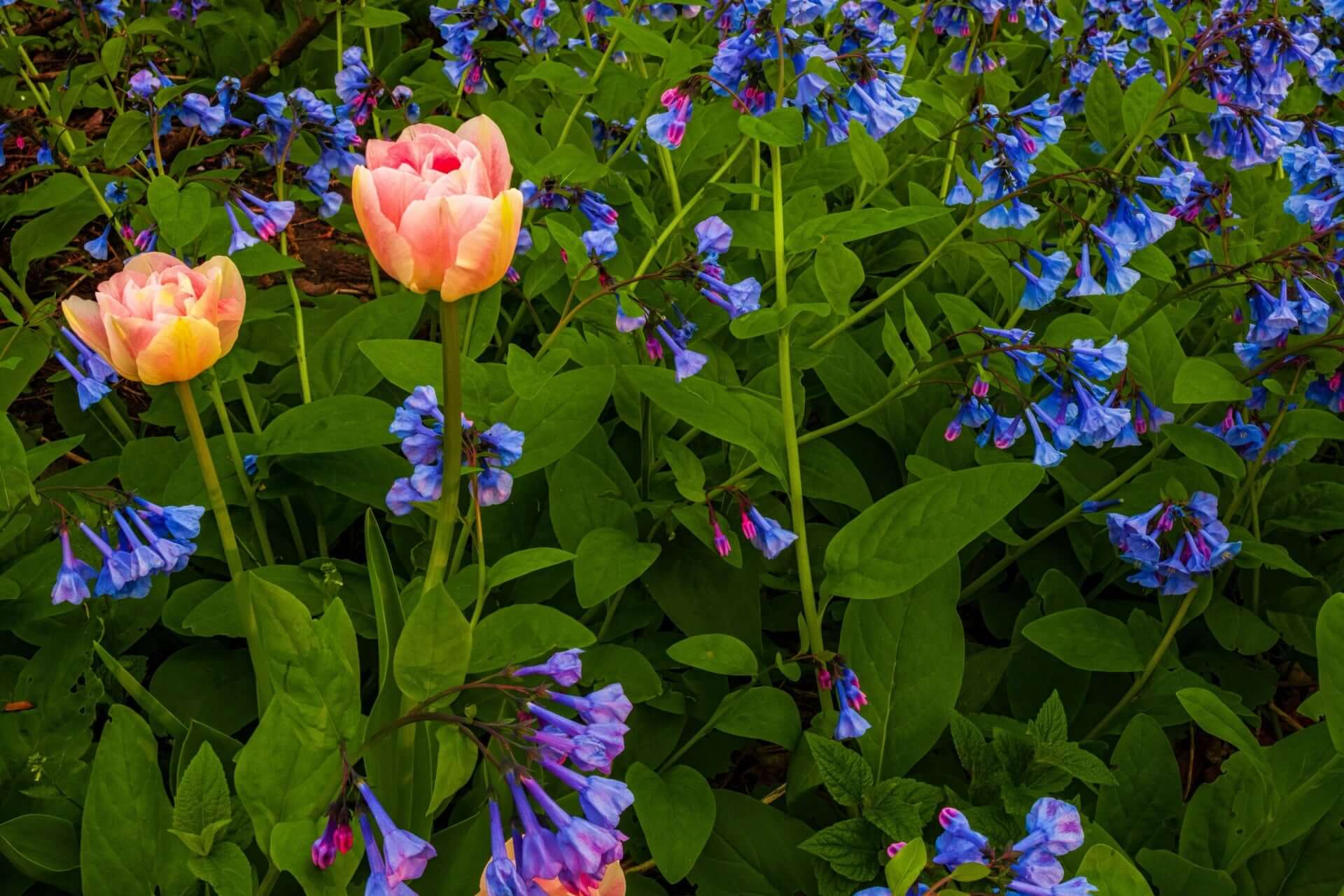Virginia bluebells (Mertensia virginica) are rare, enchanting plants that announce the arrival of spring with their stunning clusters of blue, bell-shaped blooms. These wildflowers are ideal for gardeners looking to bring color, texture, and an effortless grace to their landscape. Whether you're building a woodland garden or want to add early-season beauty to your yard, Virginia bluebells offer many benefits beyond their striking appearance. In this guide, we'll explore everything you need to know about growing Virginia bluebells, from their planting schedule to their preferred conditions.
When should Virginia bluebells be planted?
Timing is essential when planting Virginia bluebells. These native perennials are best planted in the fall when the temperatures cool, but the ground is still workable. Autumn planting allows the bulbs or roots to establish themselves before winter sets in, giving them a strong start come spring. Planting in the fall ensures the bluebells have ample time to root down and prepare for their glorious spring bloom.

It's essential to remember that Virginia bluebells are ephemeral plants. They die shortly after flowering, typically by mid-summer, and stay dormant until spring. This natural cycle makes the fall planting window critical because it allows the plants to rest and store energy during their dormancy.
If you miss the fall planting time, early spring is another option, although it might delay blooming that year. The key is ensuring the ground isn't frozen, and the plants have time to root before their rapid spring growth begins. Either way, Virginia bluebells reward your timing with an impressive spring show.
Do Virginia bluebells spread quickly?
Virginia bluebells do spread, but they take their time. They are not aggressive spreaders like some ground covers, but rather, they expand at a moderate pace, forming loose colonies over several years. Their spreading happens in two ways: through seeds and by rhizomes underground.
After blooming, Virginia bluebells produce seeds that can be scattered by wind or water. The seeds may take a couple of years to germinate and establish new plants. The plants also spread through underground rhizomes, which extend outward and gradually increase the plant's footprint in your garden. While the process is not rapid, it's steady and reliable, creating a naturalistic effect ideal for woodland gardens or naturalized areas.

Because they spread slowly, you won't have to worry about them overtaking a garden bed. Instead, you'll find that these lovely plants will fill in open spaces with their vibrant, early-season blooms, creating a soft, dreamy carpet of blue and pink hues over time.
Where can I find Virginia bluebells?
Virginia bluebells are commonly available at local nurseries, especially those specializing in native plants. They are also readily found online through reputable plant nurseries focusing on native or woodland species. If you're sourcing them online, choose a supplier that offers high-quality, well-established roots or plants.
Given their status as a beloved native species, Virginia bluebells are often featured in plant sales hosted by native plant societies or botanical gardens, especially in the fall. These are excellent sources for finding healthy, regionally appropriate specimens. If you're lucky enough to live near a woodland or natural area where they grow wild, take a trip in early spring to see them in their natural habitat. However, avoid taking plants from the wild-this can damage local ecosystems and is often illegal. Instead, rely on cultivated sources to bring these beauties into your garden.
Where is the best place to plant Virginia bluebells?
When planting Virginia bluebells, it's essential to mimic the conditions in which they naturally thrive. As woodland plants, they prefer partial to full shade, which makes them an excellent choice for planting beneath trees, in shaded garden beds, or alongside ferns and other shade-loving perennials. While they will tolerate some morning sun, too much direct light can cause the delicate flowers to fade quickly.

The soil where Virginia bluebells are planted should be rich in organic matter, well-draining, and consistently moist. In their native habitat, bluebells are often found in damp woodlands or near streams, which gives clues about the type of soil they prefer-slightly acidic, humus-rich, and never dry for long periods. Adding compost or leaf mold to your garden bed can help create the ideal soil structure for them to flourish.
One of the joys of Virginia bluebells is their ability to fill a niche in shady areas where many other flowering plants struggle. If you have a garden space that feels dark or dull, bluebells can transform it into a vibrant oasis of color in the spring months. Consider planting them alongside other early bloomers like trilliums, bleeding hearts, and columbines to extend the season of interest in a shaded garden space. Ferns or hostas can take over after the bluebells die in early summer, ensuring your garden remains thick and stunning throughout the growing season.

Virginia bluebells offer an enchanting addition to any garden, especially if you're looking for a low-maintenance, early-blooming plant that thrives in shaded or woodland settings. From their delicate bell-shaped blooms to their ability to form loose colonies over time, they bring a natural, effortless beauty to the landscape. By planting them in the fall, ensuring they have the right conditions, and allowing them to spread slowly, you can enjoy a stunning display of bluebells for many springs.
Virginia bluebells are a perennial favorite because of their timeless charm. Whether you're a seasoned gardener or new to planting native species, these resilient perennials are a delightful, fuss-free choice that will reward you year after year with their striking springtime blooms.
